
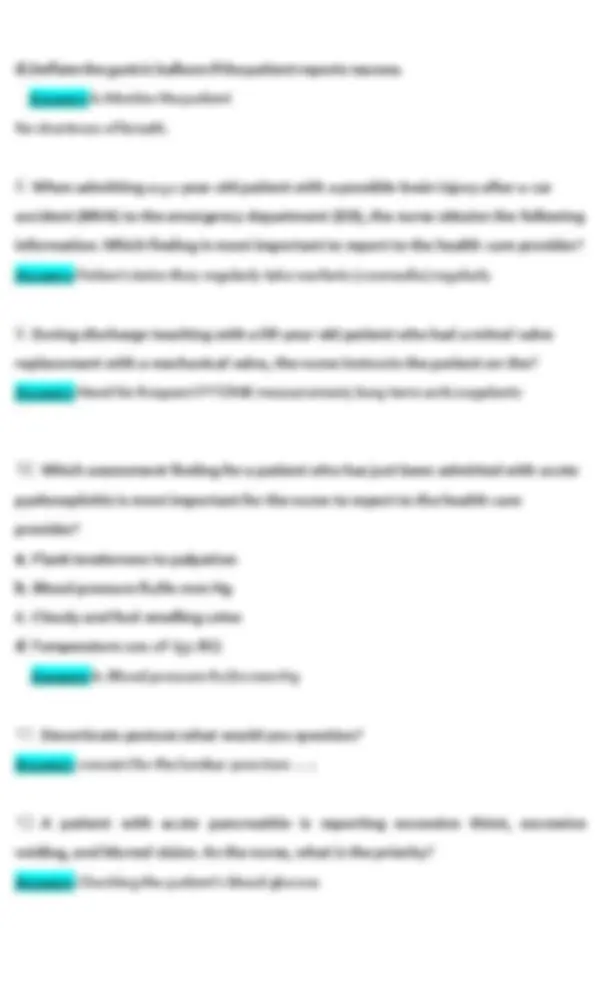
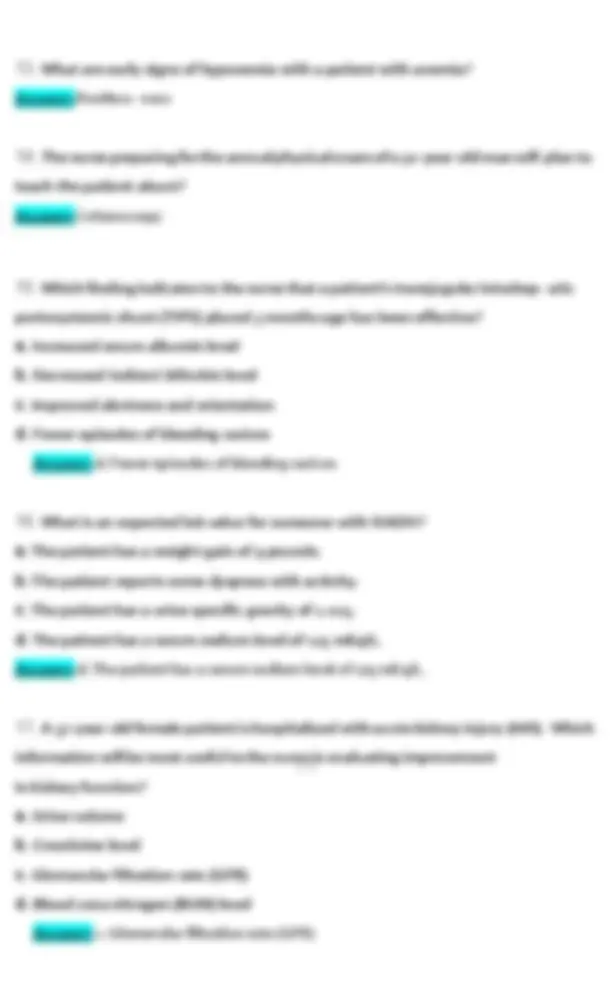
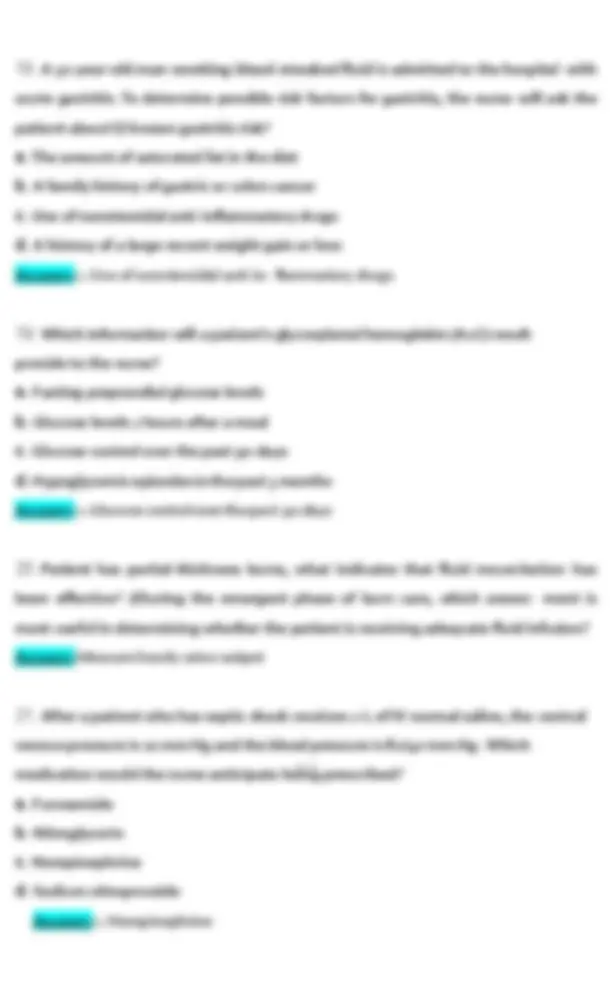
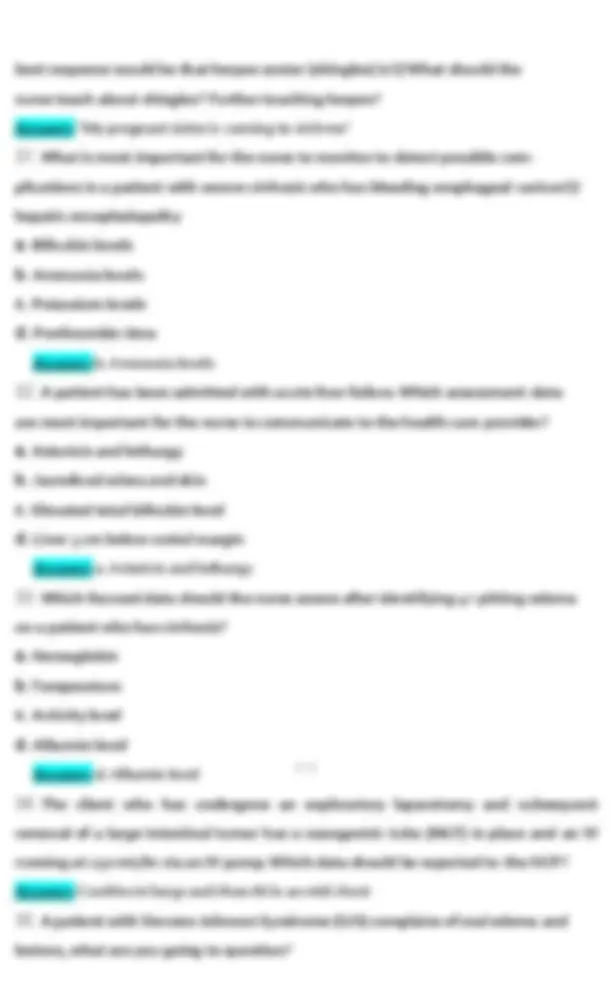
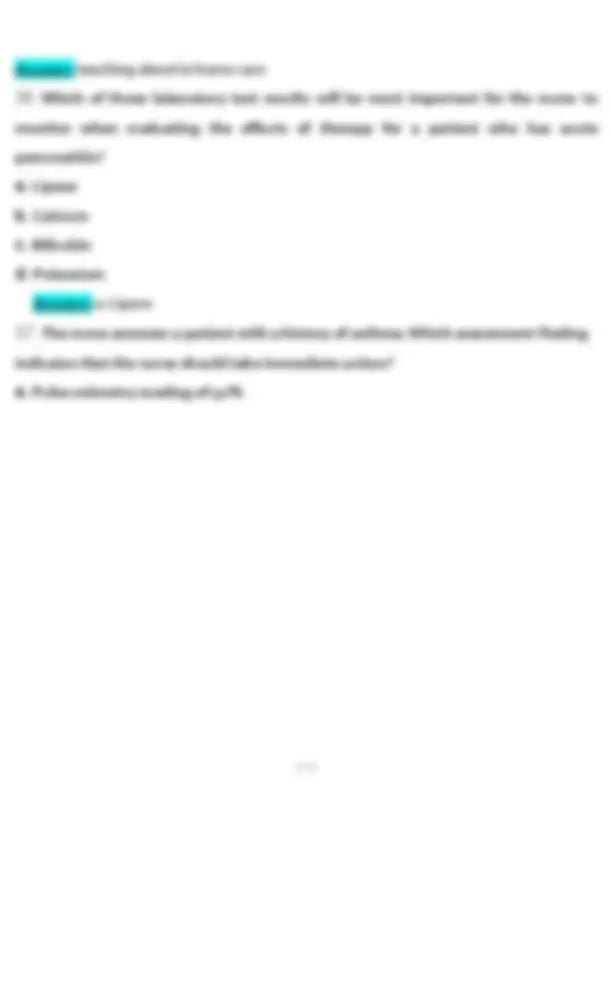
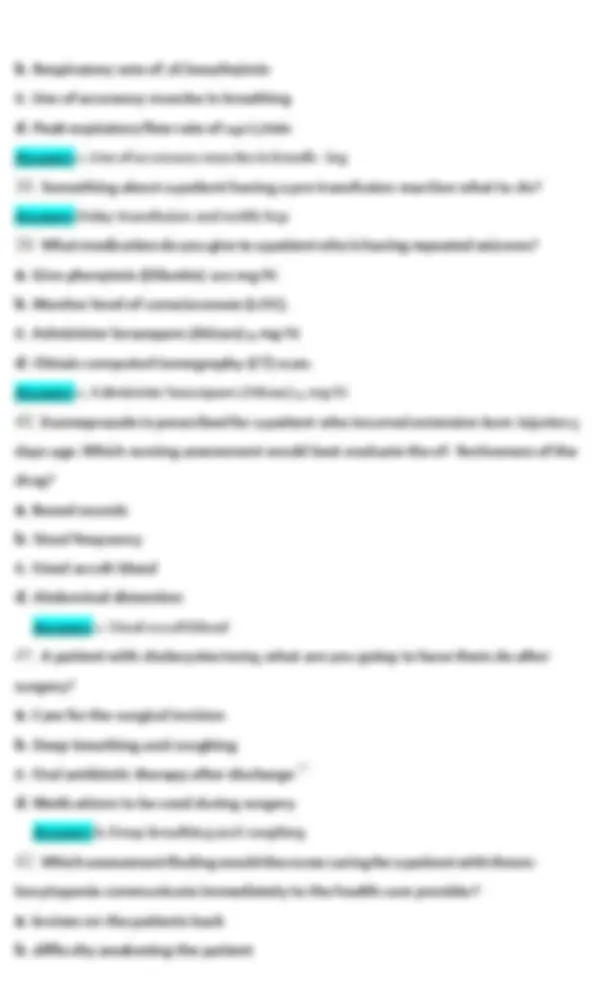
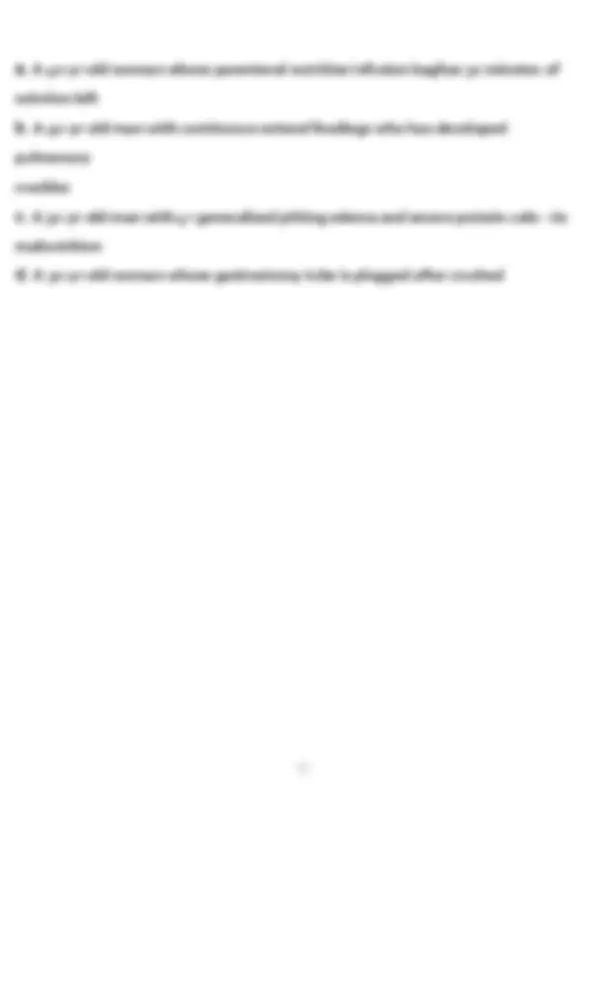
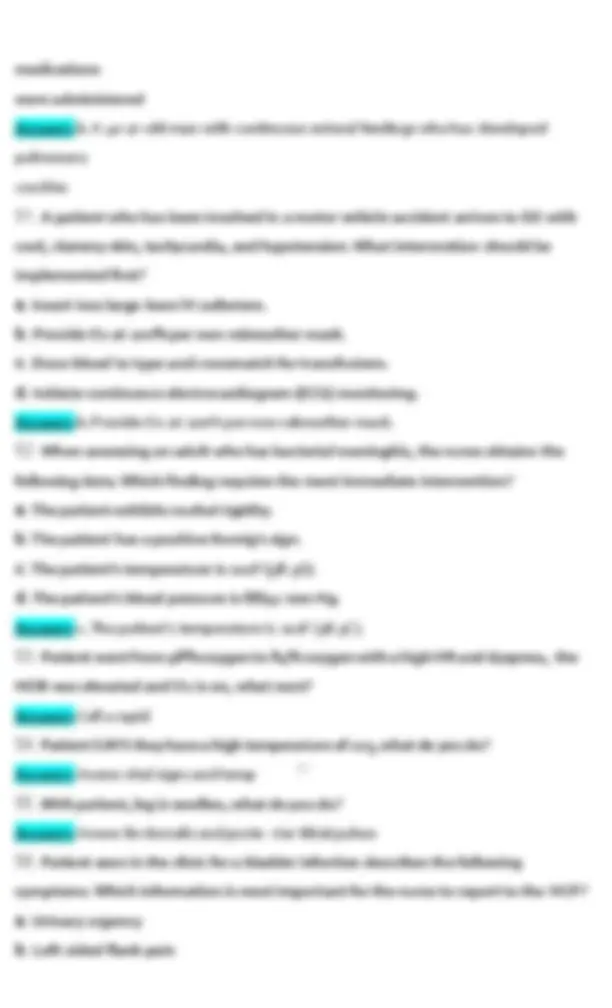
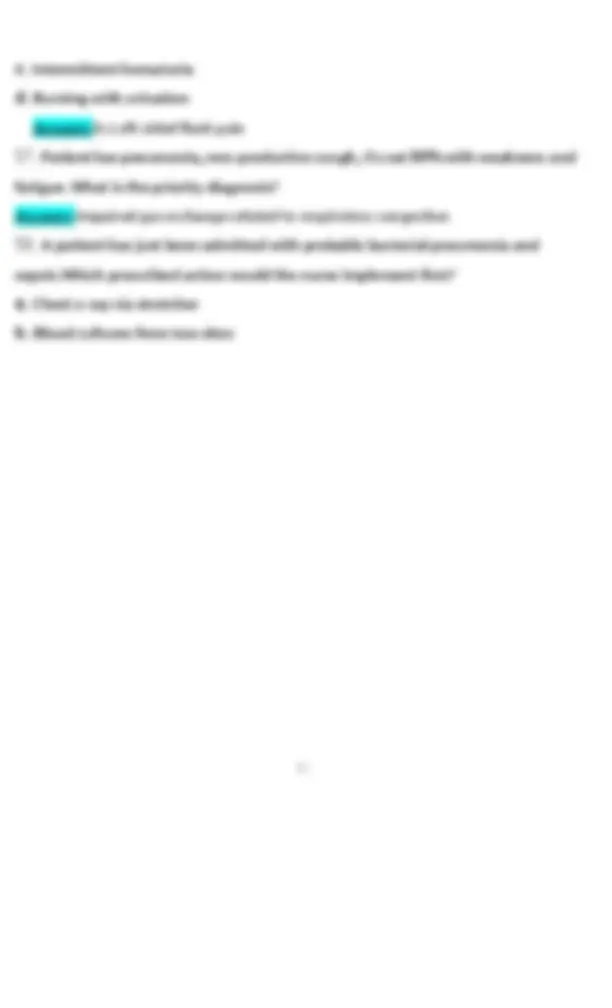
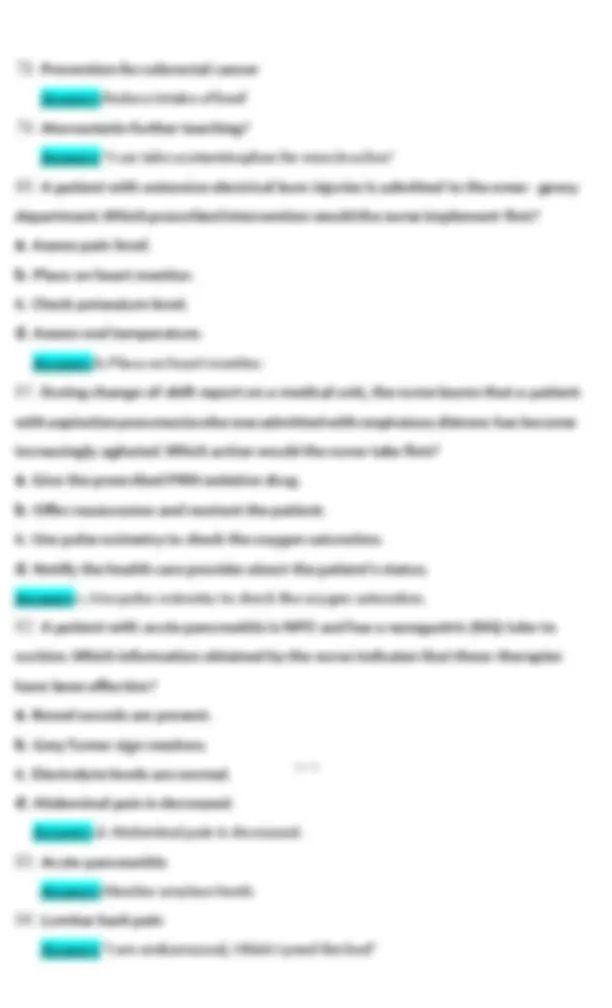
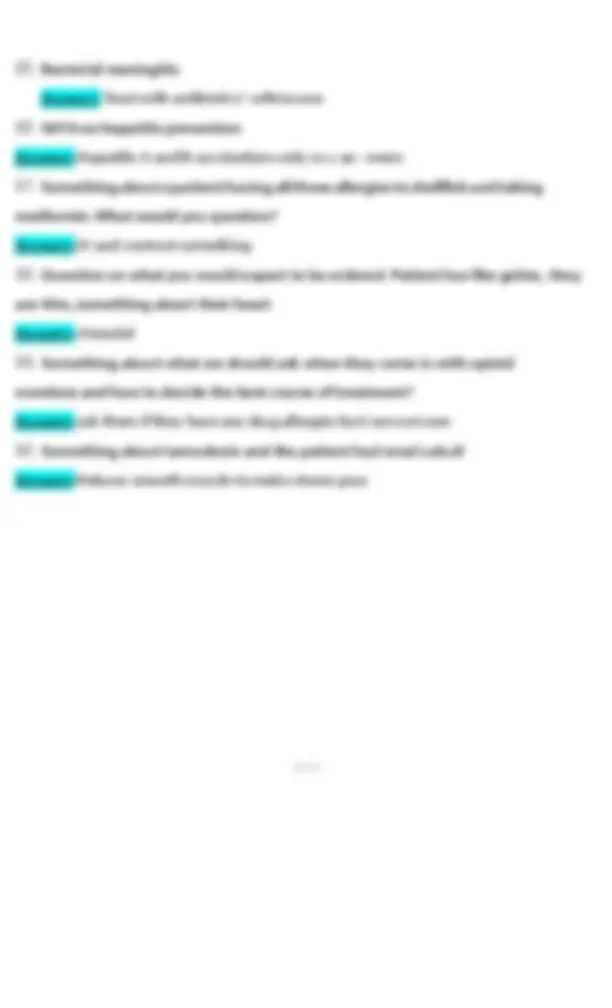
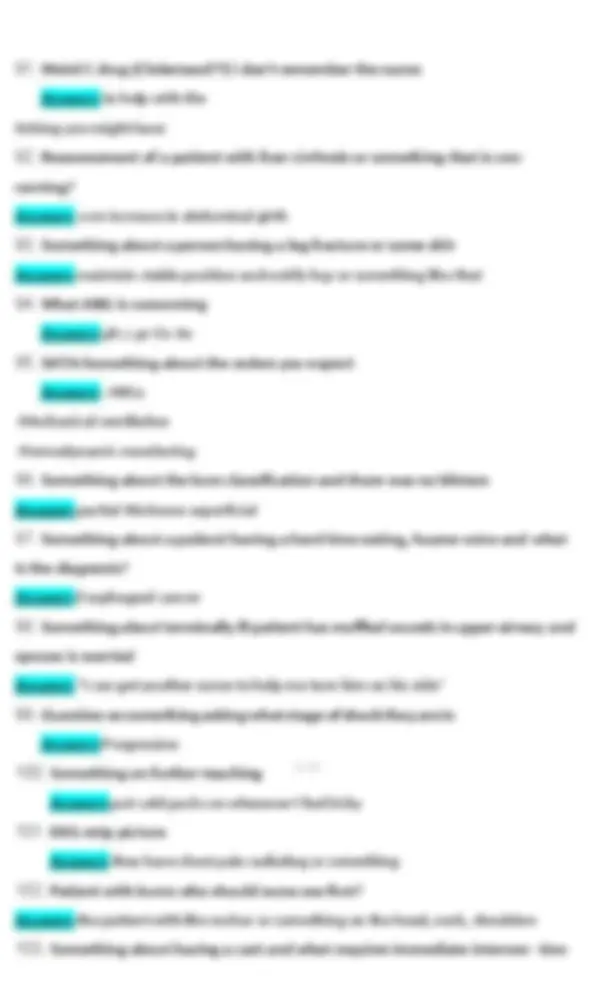
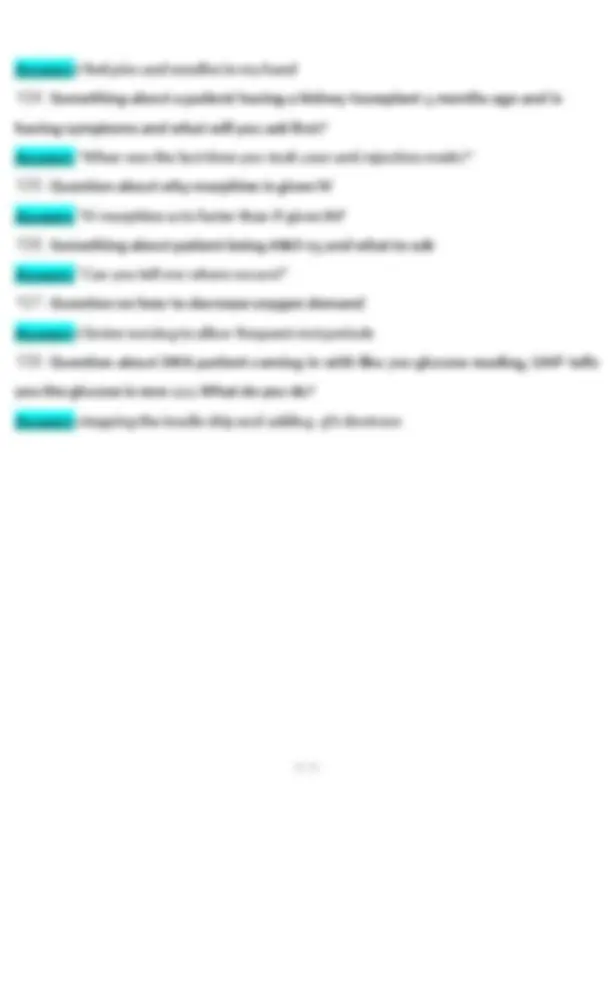
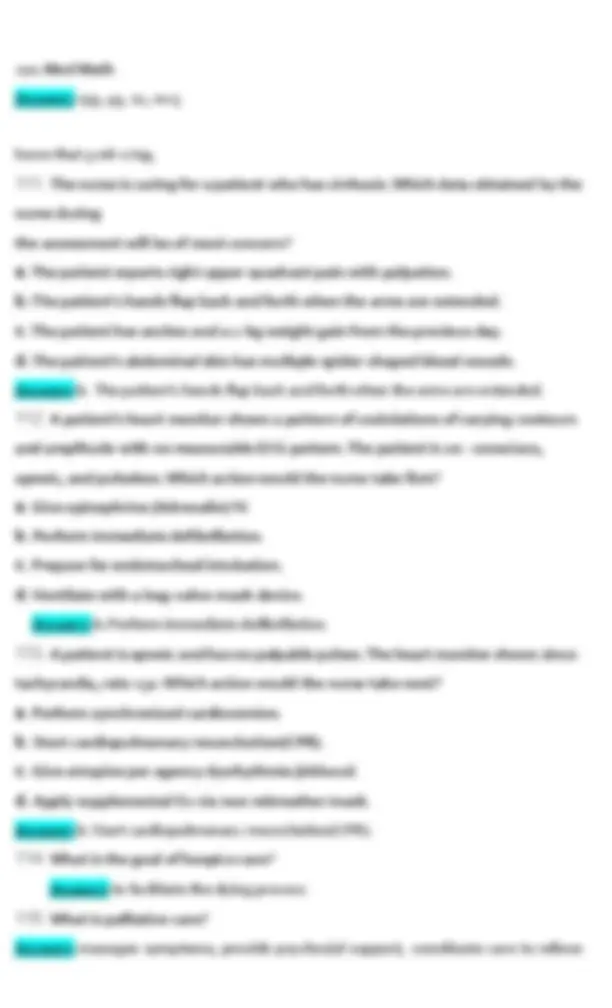
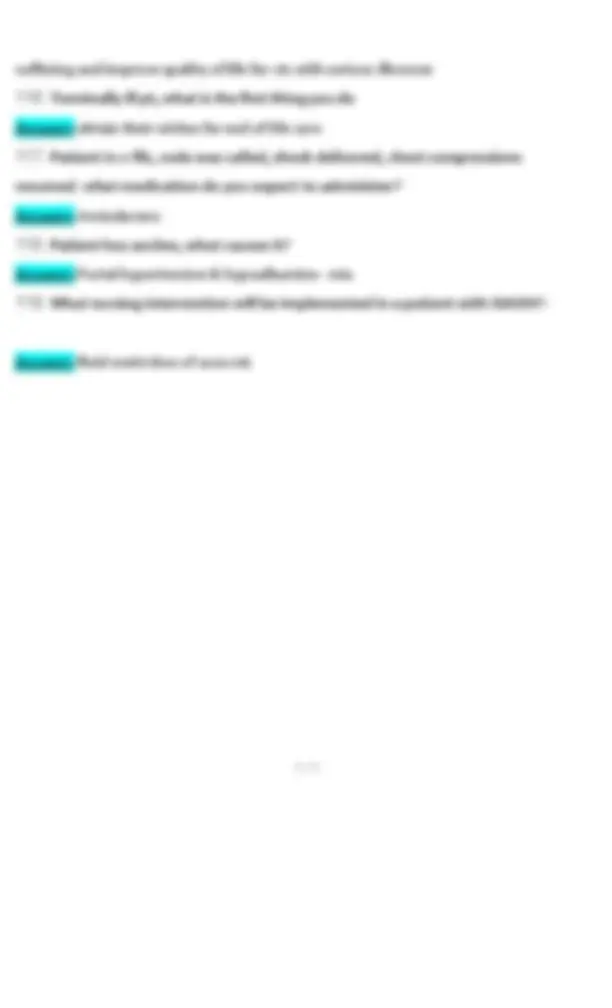
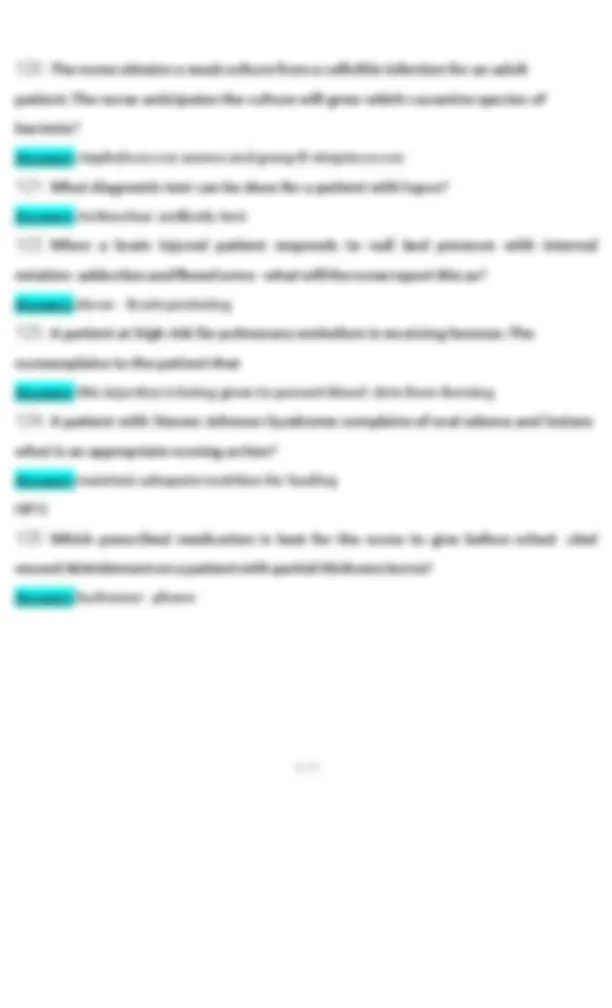


Study with the several resources on Docsity

Earn points by helping other students or get them with a premium plan


Prepare for your exams
Study with the several resources on Docsity

Earn points to download
Earn points by helping other students or get them with a premium plan
Community
Ask the community for help and clear up your study doubts
Discover the best universities in your country according to Docsity users
Free resources
Download our free guides on studying techniques, anxiety management strategies, and thesis advice from Docsity tutors
NSG 430 Adult Health Nursing II Exam Qs and Ans with Explanation (Latest 2025 / 2026), Verified Revised Full Exam NSG 430 exam questions Adult Health Nursing II exam NSG 430 test answers NSG 430 exam 2025 Revised exam questions NSG 430 Adult Health Nursing II test Verified NSG 430 exam answers NSG 430 exam 2026 Adult Health Nursing exam study guide Latest NSG 430 exam questions NSG 430 full exam 2025 Adult Health Nursing II practice exam NSG 430 question and answer with explanations NSG 430 exam preparation NSG 430 study materials NSG 430 nursing exam revision Adult Health Nursing final exam prep NSG 430 new exam format NSG 430 past exam papers Adult Health Nursing II sample questions NSG 430 online exam resources NSG 430 exam review 2025 NSG 430 test bank Adult Health Nursing II exam help NSG 430 practice questions NSG 430 nursing test 2025 Adult Health Nursing II assessment NSG 430 exam update 2026 NSG 430 exam study guide
Typology: Exams
1 / 24

This page cannot be seen from the preview
Don't miss anything!

















1 / 13
Answer> -Vancomycin 1000mls -Elevate the extremity -Heat packs
2 / 13
Answer> a. The patient's serum creatinine level is elevated.
4 / 13
5 / 13
7 / 13
b. Ask about chest pain. c. Check blood pressure. d. Observe for dysrhythmias. Answer> b. Ask about chest pain.
8 / 13
best response would be that herpes zoster (shingles) is?// What should the nurse teach about shingles? Further teaching herpes? Answer> "My pregnant sister is coming to visit me"
1013 /
b. Respiratory rate of 26 breaths/min c. Use of accessory muscles in breathing d. Peak expiratory flow rate of 240 L/min Answer> c. Use of accessory muscles in breath- ing
1113 /
c. purpura on the patients oral mucosa d. the patients platelet count is 52, Answer> b. difficulty awakening the patient
1313 /
a. A 40-yr-old woman whose parenteral nutrition infusion baghas 30 minutes of solution left b. A 40-yr-old man with continuous enteral feedings who has developed pulmonary crackles c. A 30-yr-old man with 4+ generalized pitting edema and severe protein-calo- rie malnutrition d. A 30-yr-old woman whose gastrostomy tube is plugged after crushed
1413 /
medications were administered Answer> b. A 40-yr-old man with continuous enteral feedings who has developed pulmonary crackles
1613 /
c. Ciprofloxacin (Cipro) 400 mg IV d. Acetaminophen (Tylenol) suppository Answer> b. Blood cultures from two sites
1713 /
10 / 13
11 / 13